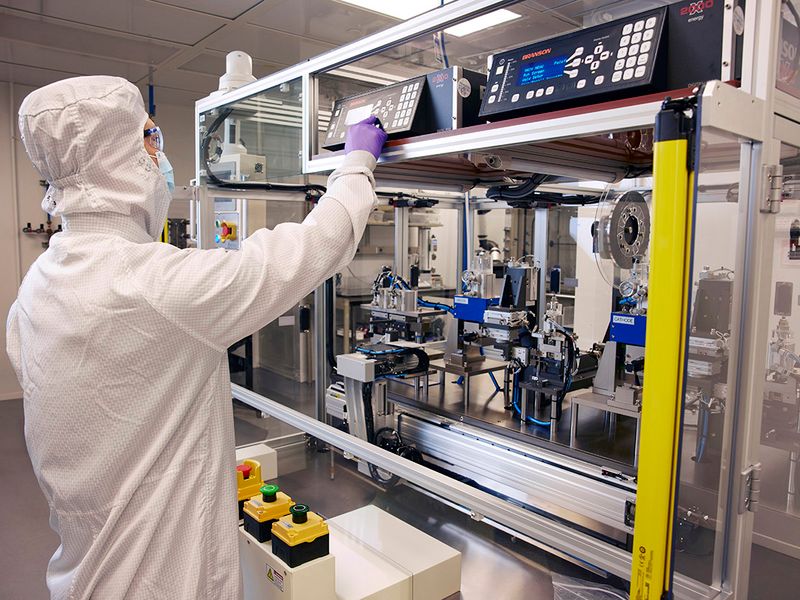
DETROIT — General Motors next year plans to open a battery cell innovation lab at its Global Technical Center campus in Warren, Mich., centralizing much of its battery operations and accelerating development of a longer-range battery, the automaker said Tuesday.
The Wallace Battery Cell Innovation Center, named after the late GM battery engineer Bill Wallace, is slated to open in mid-2022 in the Detroit suburb. GM expects the center to triple in size as EV demand increases.
“To put everybody in an EV, we need to make better batteries that cost a lot less. That’s why we’re investing in this research center and development center,” said Tim Grewe, director of global battery cell engineering and strategy.
GM did not disclose the exact investment amount, but Ken Morris, vice president of electric and autonomous vehicles, said the automaker is spending hundreds of millions on the project.
The center will mark GM’s latest advancement in battery development at its Warren campus. GM’s Research and Development Chemical and Materials’ Subsystems Lab leads battery development, and the Estes Battery Systems Lab validates the cell, modules and packs.
Development, research and manufacturing engineers will work across GM’s Tech Center labs to develop next-generation, high-density, low-cost batteries, the automaker said.
The new center will allow GM to advance technology, such as lithium-metal, silicon and solid-state batteries and test production methods that the automaker can apply at battery cell manufacturing plants.
The Wallace Center will allow GM to prototype large-format cells, which it’s unable to do in its R&D centers today.
“We’re also looking at how we manufacture cells as we go into the new materials and the new chemistry. It’s opening up lots of possibilities of things that we don’t have in-house capability of right now,” said Morris.
Those large-format battery cells are nearly twice the size of the first-generation Ultium pouch cells and are packed with uniform stacked electrodes, said Grewe. The stacked electrodes are the key manufacturing technology to achieve the energy density GM aims for in next-generation EVs, he said.
“With this investment we plan to have the ability to go up to 1,200 watt-hours per liter, and that means that you can easily have a 500- or 600-mile vehicle range on a single charge … creating a new reality for our customers,” Grewe said. “With these high-energy-density, low-cost vehicles, I really think we can have a better package that’s less mass, better for the vehicle, better for the customer.”
Bill Wallace was GM’s director of battery systems and electrification. He led the team that released the automaker’s advanced battery systems in the Chevrolet Volt, Malibu Hybrid and Bolt EV.
He also connected GM and LG Energy Solution, which led to Ultium Cells, GM and LG’s joint venture. Wallace worked until his death in 2018.

